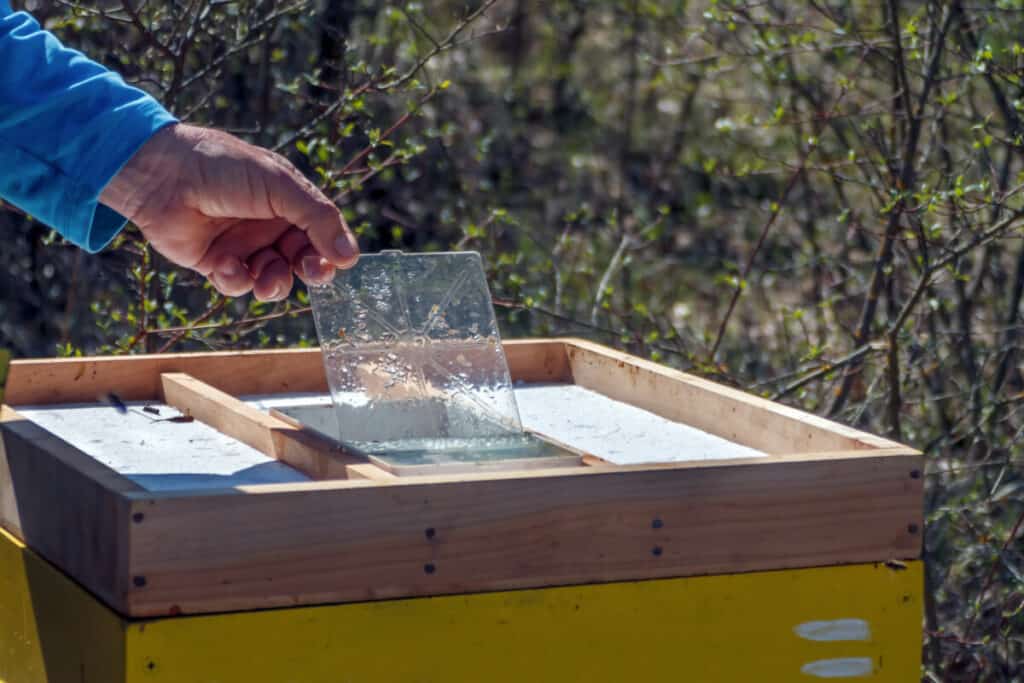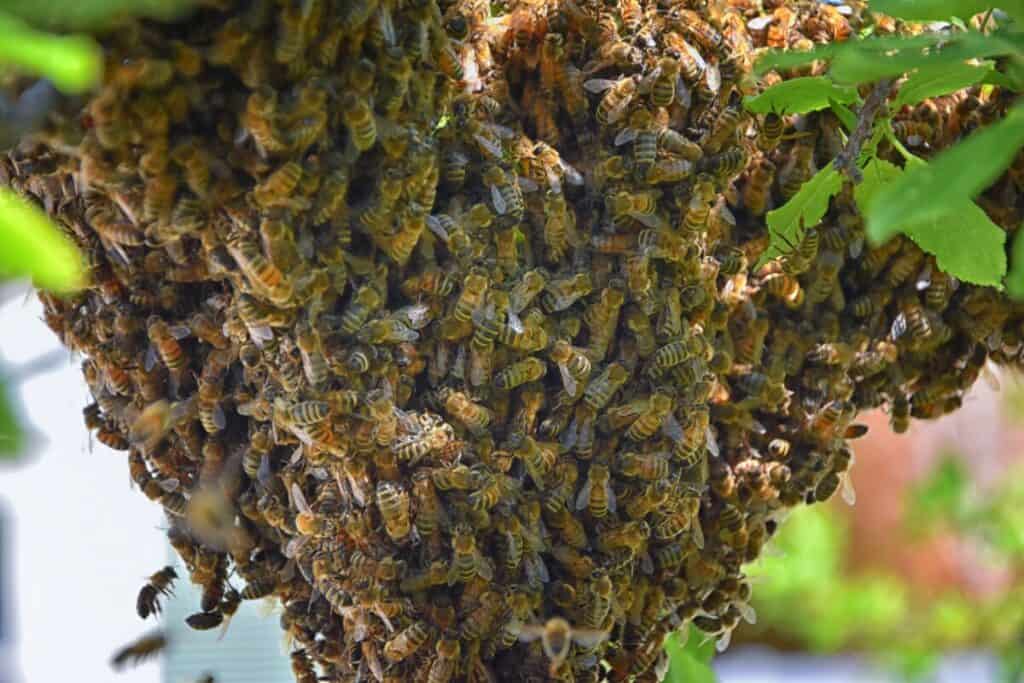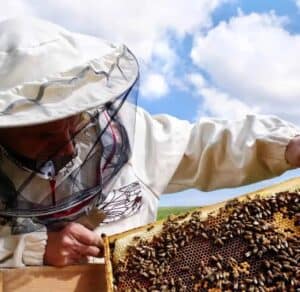How Much Should I Feed My New Hives? Can I Feed Too Much?
There is a learning curve that accompanies developing any new skill but there is a lot to learn when it comes to beekeeping. One of the most important things for individuals beginning their beekeeping journey is how to feed a new hive. So, how much should a new hive be fed?
A new hive of bees should be provided with one quart of sugar syrup each day. This is the suggested amount to begin feeding a new hive, however, as time goes on the amount needed by the hive will fluctuate. It is important to ensure that a new hive is not being overfed.
There is a lot of information that a beginner beekeeper needs to learn to successfully take care of a new hive. It is important that research is done before an individual begins their journey as a beekeeper. After conducting research, the following information has been compiled pertaining to feeding a new hive.
Feeding a New Hive

A beekeeper must feed a new hive of bees. It is not until a new hive is able to reproduce their population that they are fed. This allows the hive to continue to increase the number of bees that are present within the hive.
Typically a new hive of bees needs to be fed a quart of sugar syrup every day in order to obtain the needed energy and nutrients to effectively run the hive.
Feeding a hive allows the bees to grow and encourages the worker bees to begin wax production. This allows the worker bees to create the cells that are needed for the queen bee to lay eggs. This is an important step in reproducing the hive.
It is important that the bees within a hive are well-fed. If the bees are underfed, it is less likely that they will be able to produce the wax that they require to maintain a functional beehive.
Ways to Feed a New Hive
There are a few different methods for feeding a new hive, however, most beekeepers use feeders to guarantee their hive is receiving enough nutrients. There are a few different types of feeders that allow a hive to obtain the nutrients that the bees require.
These feeders can either be purchased or made at home, however, each feeder needs to be attached directly to a hive. Some of these feeders are able to be refilled without needing to open the hive while others require opening the hive in order to refill them.
Many beekeepers have learned that attaching the feeder to the top of the hive is the best way to effectively feed a new hive. Depending on the type of feeder that has been selected can determine the exact way in which it is attached to the hive.

What should New Hives be Fed?
A new hive of bees should be feed sugar syrup. This allows the bees to begin producing the wax that is needed to work on building the hive. Feeding a bee this sugar syrup allows the bees to begin producing their own nectar that can provide them with the needed nutrients and energy to sustain the hive.
In the spring before the production of pollen is consistent, it can be beneficial to feed a new hive with a pollen patty. This allows pees to have access to the nutrients and proteins that bees often gain from consuming pollen. If the plants can successfully get enough pollen from flowers, a pollen patty might be unnecessary.
What Causes the Amount of Feed Needed to Fluctuate?
There are a few factors that can cause the amount of sugar syrup that is needed for a hive to fluctuate. The biggest factor that impacts the amount of feed that is needed to effectively feed a hive is the weather. If the weather is cooler or rainy, a hive might need to consume more than one quart a day to receive the necessary proteins and nutrients.
The amount of nectar that is being produced within the hive can impact the amount of sugar syrup that is needed to effectively provide the bees with the required energy.
It is important to frequently check on the feed and ensure that the bees are not creating combs around the feeder. It is important that the bees are creating the comb within the beehive itself.
A beekeeper must frequently check on the hive to ensure that the bees are obtaining enough energy, nutrients, and proteins to be able to have a successful hive. However, it is important to ensure that a hive is not being overfed.
The Dangers of Overfeeding a New Hive
Overfeeding a new hive can be extremely harmful to a colony of bees. If bees are consuming too much sugar syrup, they will not be able to produce the wax and nectar that are required for the hive to be fully functional.
If a hive is overfed, the bees will continue to grow, however, there will not be any room in the hive for the queen to lay eggs that are needed to continue to increase the population of a hive. This can result in the hive eventually dying off which is not what any beekeeper wants.
Overfeeding can also result in swarming. This means that the hive of bees swarm together and leave their current beehive to find a larger hive that is a better fit for the overpopulated colony.

When Should a Hive Stop Being Fed?
There comes a time when a beekeeper should stop feeding their hive and allow the hive to provide for themselves. On average, it takes a few weeks of feeding the new hive before they can produce their own flow of nectar that can provide them with the needed energy for the worker bees to continue to provide for their hive.
In most instances, bees will stop consuming the sugar syrup once they have begun producing their own flow of nectar. Bees prefer consuming nectar which is why they will stop relying on sugar syrup to feed themselves nectar.

Joseph Davis
My goal is to show that anyone can take up beekeeping and it can be a very rewarding hobby. I strive to share my experiences and answer any questions you may have.
